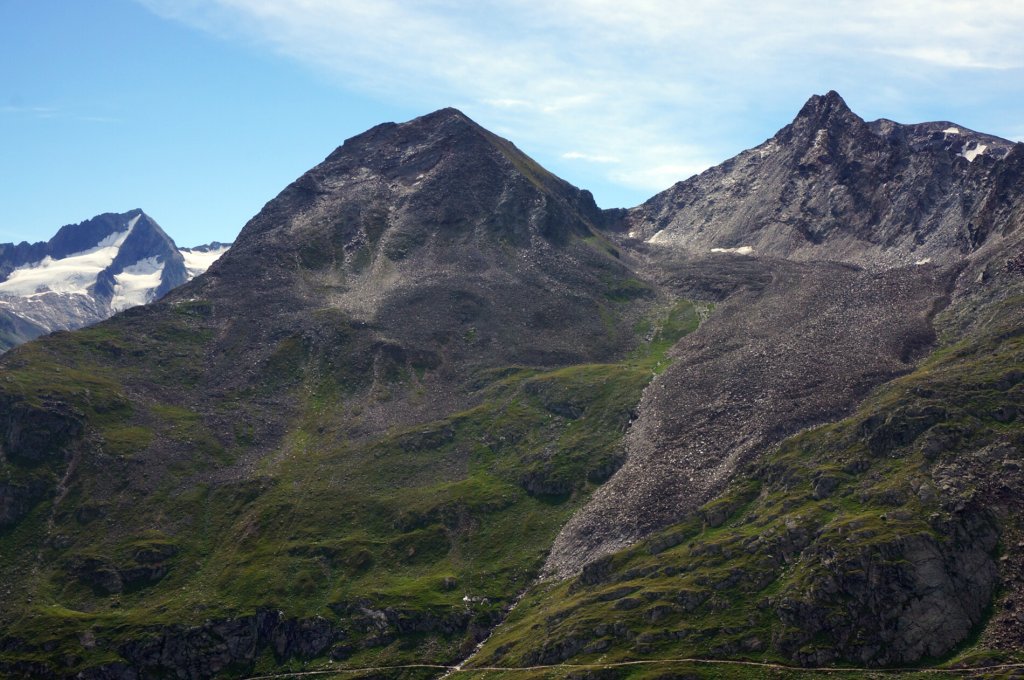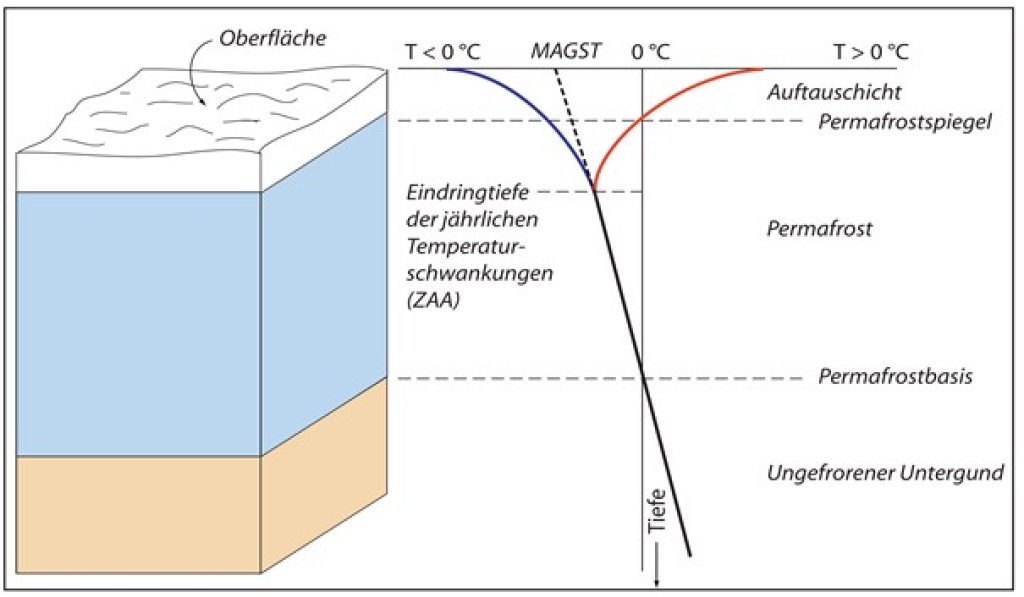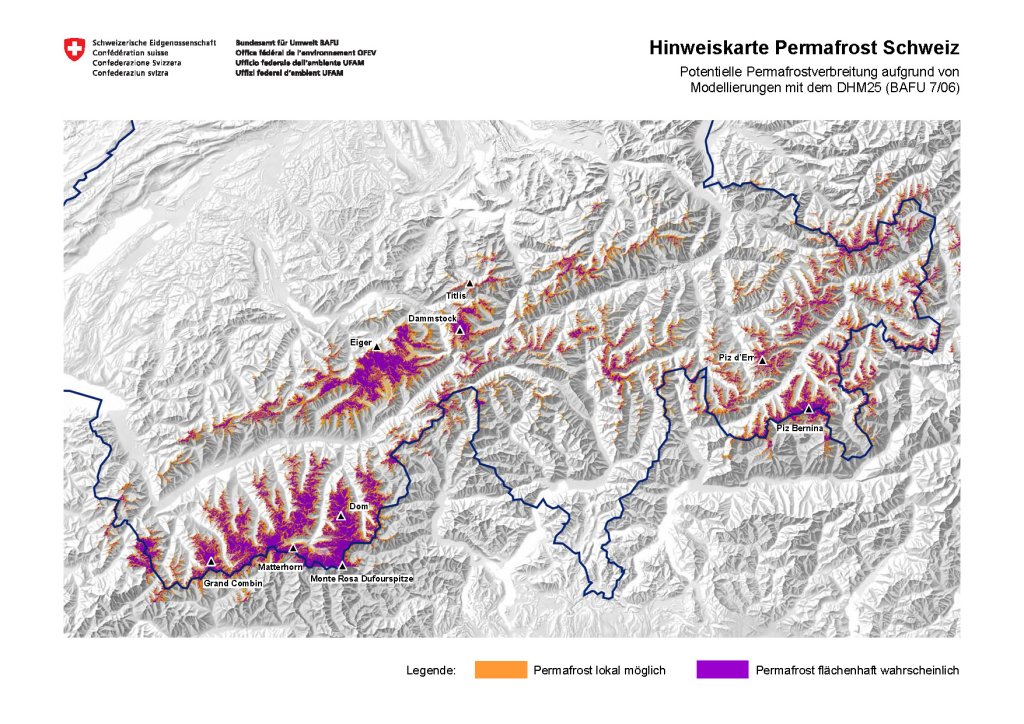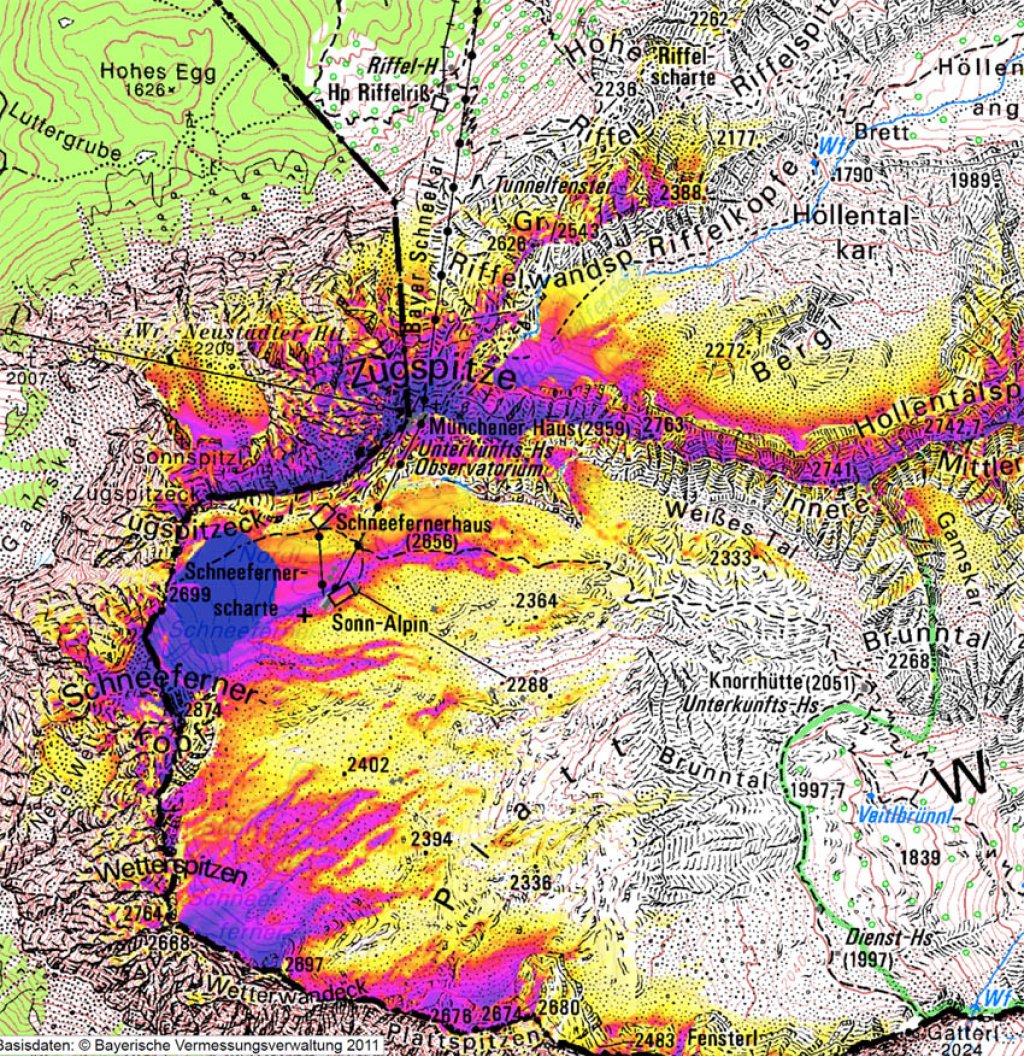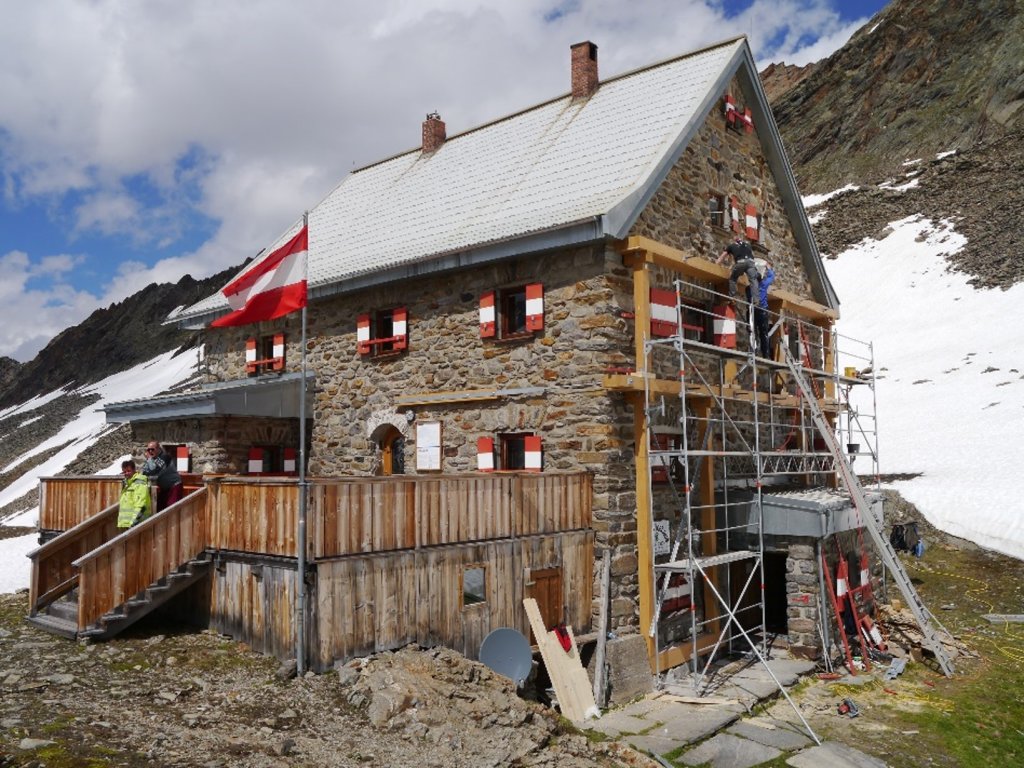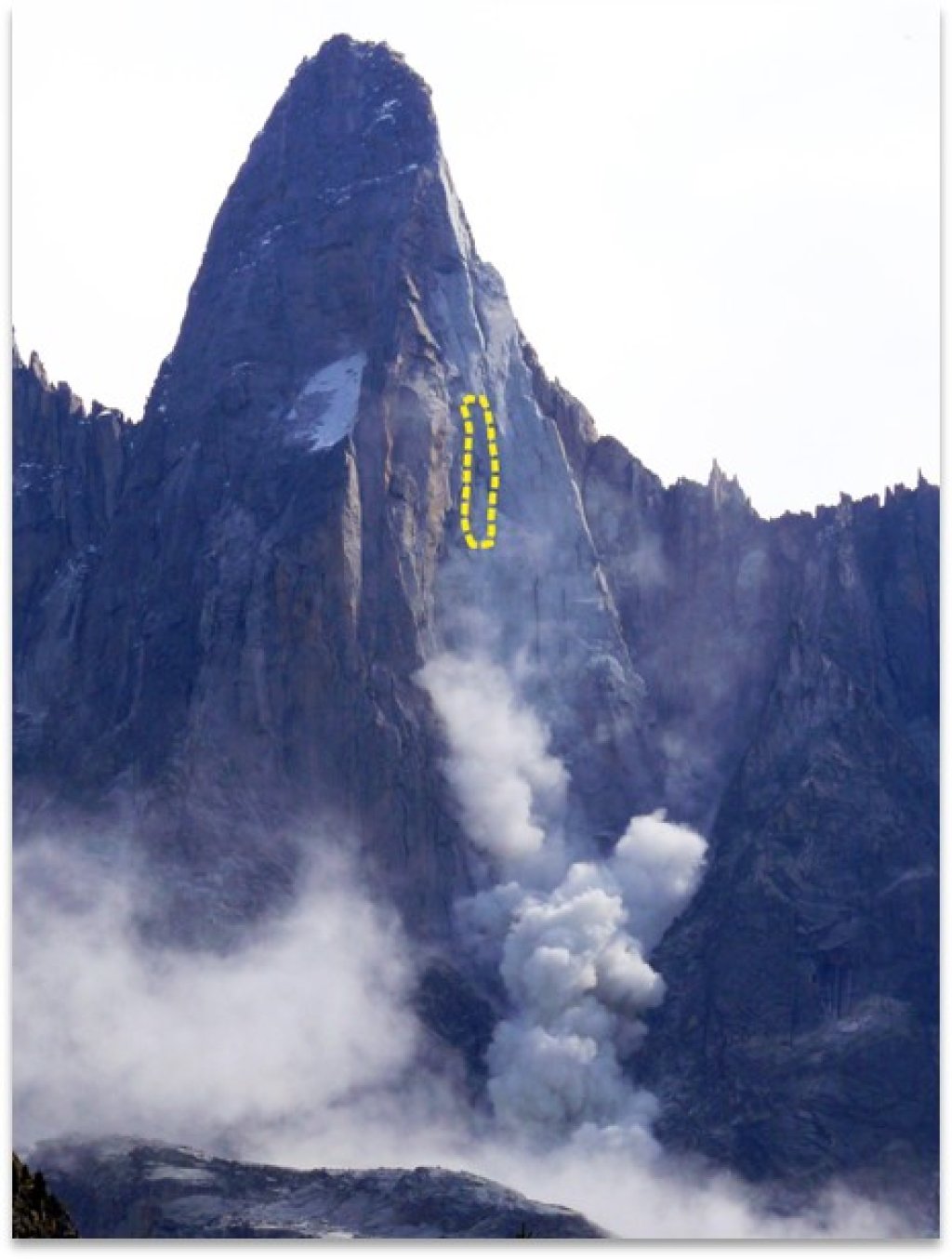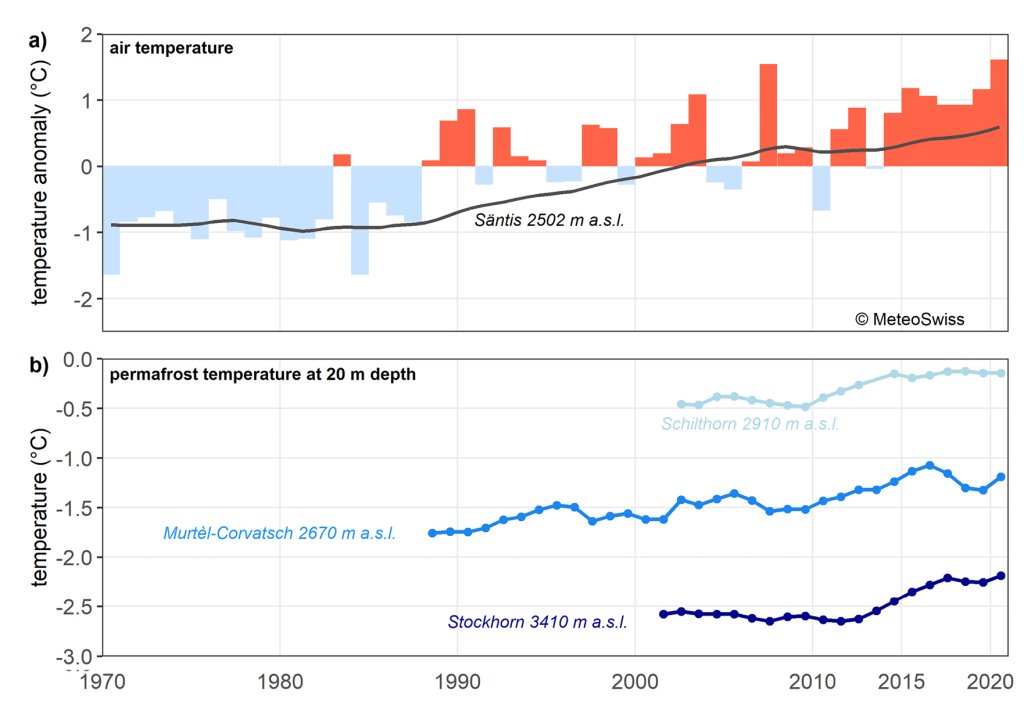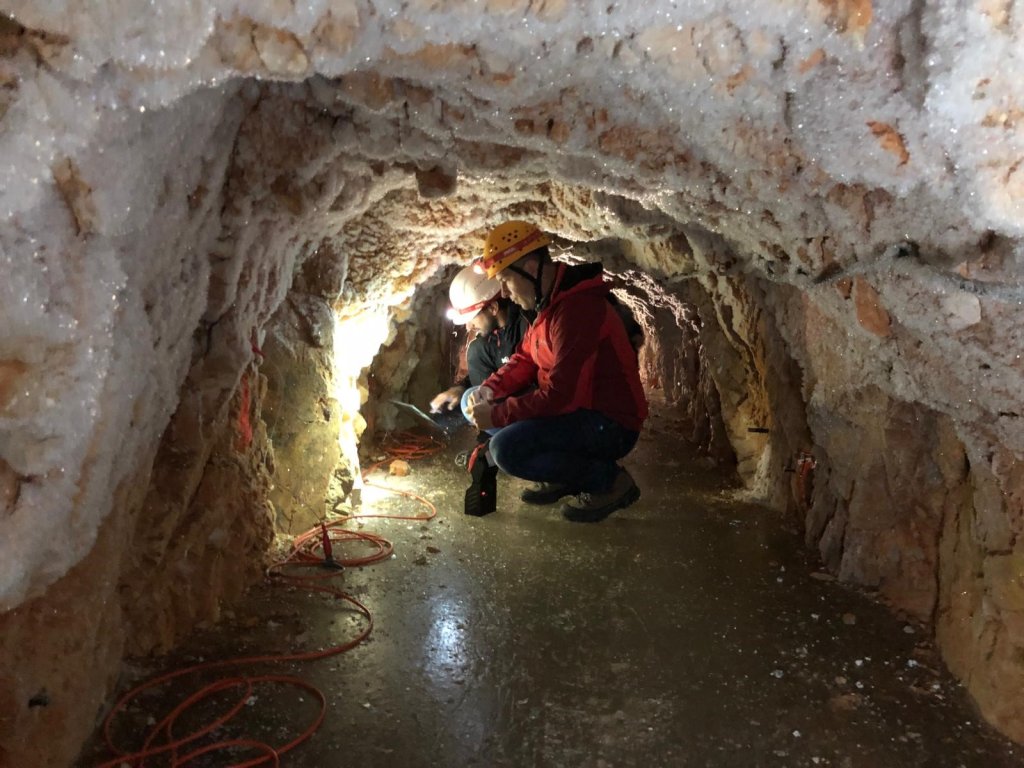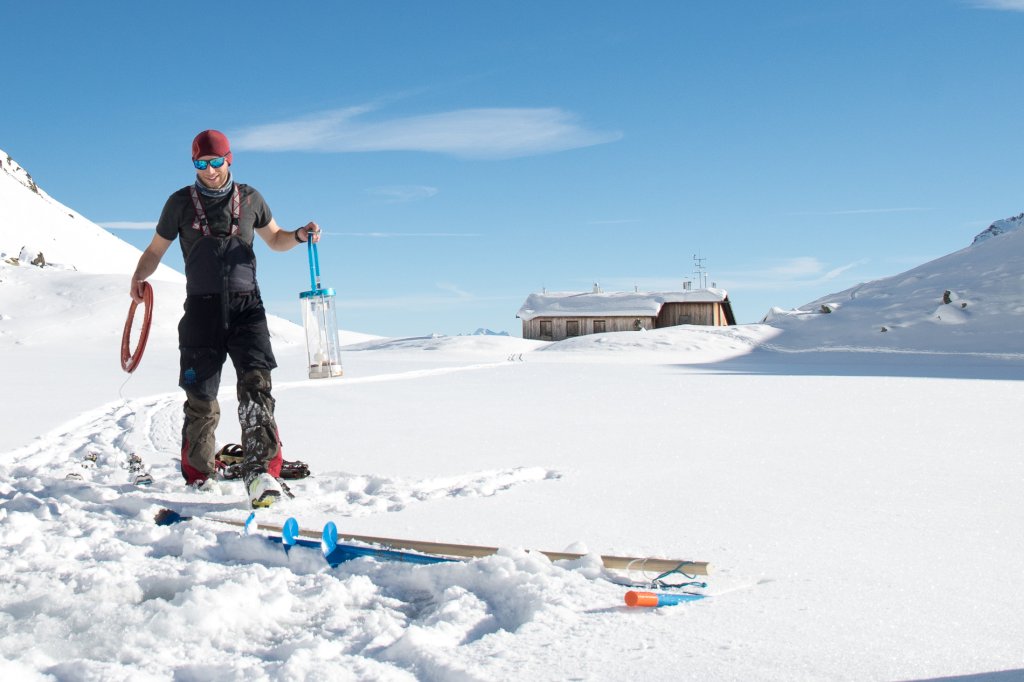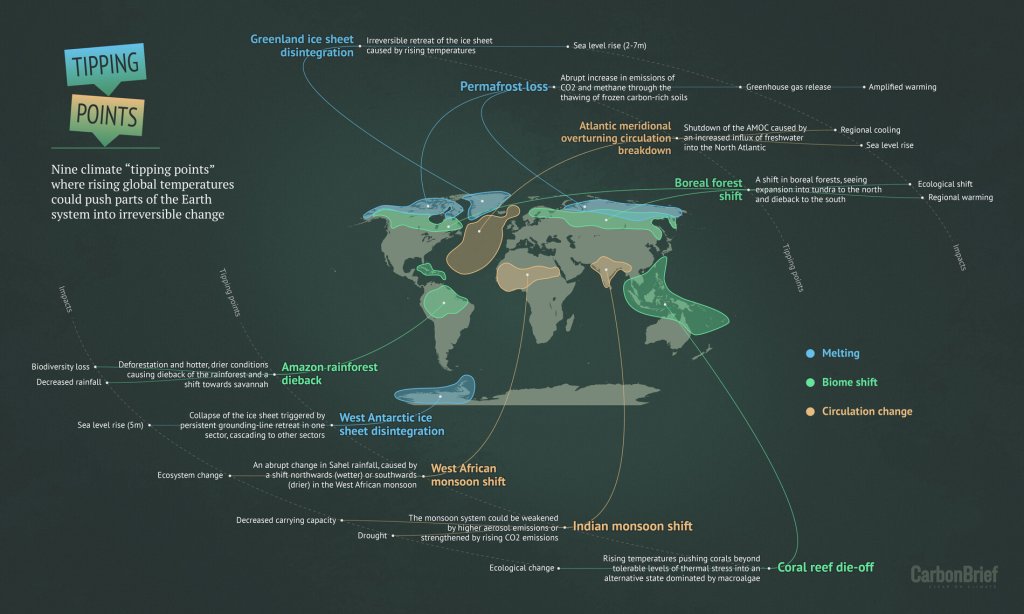Icy patchwork
Permafrost can form in climatic regions where the average annual temperature is in the range of -6 to -8 °C or below. In the Arctic (Siberia, Canada), for example, the ground is frozen over thousands of square kilometers to depths of 900 m or more - this is known as continuous permafrost. In the Alps and all the high mountains of the world, the picture is different: the higher we go up, the closer we are to the climatic conditions of the Arctic (annual average Zugspitze, 2962 m: -4 °C) and northern slopes are significantly colder than southern slopes. This is why permafrost is found in the Alps above around 2,500 m in shady exposures and north-facing rock faces, while the lower limit of permafrost is significantly higher on the south side.
And there is another phenomenon that favors alpine permafrost: larger debris surfaces or slopes virtually trap the cold air from winter in the spaces between them and cool the ground by up to 4 °C compared to the surrounding air temperature. Permafrost can therefore persist below such debris and moraine surfaces even at much lower altitudes. The best example of this - and also the only form of permafrost that can be seen with the naked eye - are rock glaciers: a mass of blocks, debris and ice that slowly creeps downhill.
The existence of permafrost in the Alps therefore depends on significantly more factors than in the Arctic, in particular altitude, slope exposure, slope steepness and surface characteristics. The Alpine permafrost distribution is therefore more like a patchwork quilt - we speak of discontinuous or sporadic permafrost. Nevertheless, permafrost can be found on a good 5% of Switzerland's land area, for example.
It's thawing underground
The last decade was the warmest globally in the Earth's history, and the last few years have all been record years in terms of air temperature. It takes a little more time for the warm air temperatures to penetrate the ground or the rock face than with gel ice. The effect of a warm year or summer is therefore not immediate, as is the case with glacier melt, but only becomes apparent with a time lag of up to several seasons. However, the trend has now clearly arrived: never before have such high soil/rock temperatures been measured in the permafrost as last summer and the speed of the warming is alarming. At a depth of 20 meters, for example, the permafrost in Switzerland has warmed by 0.8 - 1.0 °C in the last 20 years; in lower soil layers it is significantly more. Since 1850, the lower limit of the permafrost has risen by around 150 meters. With a further warming of 1.5 °C, the permafrost boundary would rise by a further 200-750 m.
